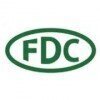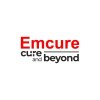QC Microbiologist
50+ QC Microbiologist Interview Questions and Answers

Asked in Meril

Q. What is the significance of microbiology in your field of interest (pharma, food, fermentation, etc.)?
Microbiology is significant in the field of pharma, food, fermentation, etc. as it helps ensure product safety and quality.
Microbiology plays a crucial role in pharmaceutical industries by ensuring the safety and efficacy of drugs through testing for microbial contamination.
In the food industry, microbiology is important for monitoring and controlling the presence of harmful microorganisms that can cause foodborne illnesses.
In fermentation processes, microbiology is essential...read more

Asked in Meril

Q. What is Sterilization?Types of Sterilization.
Sterilization is the process of killing or removing all forms of microbial life from an object or environment.
Sterilization ensures the complete elimination of all microorganisms, including bacteria, viruses, fungi, and spores.
It is commonly used in healthcare settings, laboratories, and food processing industries to prevent the spread of infections.
Different methods of sterilization include heat (autoclaving, dry heat), radiation (gamma, UV), filtration, chemical agents (eth...read more
QC Microbiologist Interview Questions and Answers for Freshers

Asked in Biocon Biologics

Q. Tell me about surface monitoring and how it is performed.
Surface monitoring is a process of regularly testing and evaluating the cleanliness and microbial contamination levels on surfaces in a controlled environment.
Surface monitoring involves taking samples from various surfaces, such as equipment, workstations, and cleanrooms.
These samples are then analyzed for the presence of microorganisms, such as bacteria, fungi, and viruses.
Surface monitoring helps to ensure that the environment is free from harmful contaminants and meets th...read more

Asked in Meril

Q. What is the Principle of Gram Staining?
Gram staining is a differential staining technique used to classify bacteria into two groups based on their cell wall composition.
Gram-positive bacteria retain the crystal violet stain and appear purple under the microscope.
Gram-negative bacteria do not retain the crystal violet stain and appear red or pink after counterstaining with safranin.
The principle of Gram staining is based on the differences in the cell wall structure of bacteria.
The process involves four steps: crys...read more

Asked in Biocon Biologics

Q. Tell me how you perform environmental monitoring?
Environment monitoring in QC microbiology involves regular sampling and testing of the manufacturing environment to ensure cleanliness and control of microbial contamination.
Sampling of air, surfaces, and water sources
Use of agar plates, swabs, or settle plates for collection
Incubation of samples to allow microbial growth
Identification and enumeration of microbial colonies
Analysis of results to assess the level of contamination and take corrective actions
Regular monitoring an...read more
Asked in Amar BioTech

Q. Tell me some bacteria, fungi and Alage that is use Bio fertilizer.
Some bacteria, fungi, and algae used as biofertilizers include Rhizobium, Azotobacter, Trichoderma, and Chlorella.
Rhizobium is a bacteria that forms a symbiotic relationship with leguminous plants, fixing atmospheric nitrogen and providing it to the plants.
Azotobacter is a free-living bacteria that can fix atmospheric nitrogen and enhance plant growth.
Trichoderma is a fungus that acts as a biocontrol agent, suppressing plant pathogens and promoting plant growth.
Chlorella is a...read more
QC Microbiologist Jobs




Asked in Meril

Q. Give 5 examples of Gram Positive Bacteria.
Gram positive bacteria are a group of bacteria that retain the crystal violet stain used in the Gram staining method.
Staphylococcus aureus
Streptococcus pneumoniae
Enterococcus faecalis
Bacillus subtilis
Clostridium difficile

Asked in Skylark

Q. five gram positive bacteria and gram negative
Gram staining is a technique used to differentiate bacteria into two groups: gram-positive and gram-negative.
Gram-positive bacteria have a thick peptidoglycan layer in their cell wall, which retains the crystal violet stain used in the staining process.
Gram-negative bacteria have a thinner peptidoglycan layer and an outer membrane that prevents the crystal violet stain from penetrating, making them appear pink or red after counterstaining with safranin.
Examples of gram-positi...read more
Share interview questions and help millions of jobseekers 🌟


Asked in Meril

Q. What methods do you use for counting microbial load?
Microbial load can be counted using various methods including plate count, filtration, and most probable number (MPN) method.
Plate count method involves spreading a diluted sample on a solid agar medium and counting the colonies that grow after incubation.
Filtration method involves filtering a known volume of sample through a membrane filter and counting the colonies that grow on the filter after incubation.
MPN method involves diluting the sample and inoculating it into a ser...read more

Asked in Med Manor Organics

Q. Describe some bacteria that are beneficial to humans.
Some bacteria are beneficial to humans and play important roles in various aspects of our lives.
Probiotic bacteria help maintain a healthy gut flora and aid in digestion.
Some bacteria are used in the production of food and beverages, such as yogurt and cheese.
Certain bacteria are involved in the production of antibiotics, which are essential for treating bacterial infections.
Bacteria like Escherichia coli (E. coli) are used in research and biotechnology.
Nitrogen-fixing bacter...read more

Asked in Meril

Q. What is MLT?
MLT stands for Medical Laboratory Technician.
MLT is a healthcare professional who performs laboratory tests and procedures.
They collect and analyze samples such as blood, urine, and tissue.
MLTs work under the supervision of medical technologists or pathologists.
They operate and maintain laboratory equipment.
MLTs ensure accuracy and quality control in test results.
They may specialize in areas like microbiology, hematology, or immunology.

Asked in Skylark

Q. What are the differences between DNA and RNA?
DNA is double-stranded, contains deoxyribose sugar, and thymine base. RNA is single-stranded, contains ribose sugar, and uracil base.
DNA is the genetic material that carries the hereditary information of an organism, while RNA is involved in protein synthesis.
DNA is more stable than RNA and has a longer lifespan.
DNA replication is a semi-conservative process, while RNA replication is conservative.
Examples of RNA include messenger RNA (mRNA), transfer RNA (tRNA), and ribosomal...read more
Asked in Universal Twin Labs

Q. What are the different types of sterilization techniques?
Different types of sterilization techniques include heat sterilization, chemical sterilization, radiation sterilization, and filtration.
Heat sterilization: Autoclaving, dry heat sterilization
Chemical sterilization: Ethylene oxide sterilization, hydrogen peroxide sterilization
Radiation sterilization: Gamma radiation, electron beam radiation
Filtration: Membrane filtration, depth filtration

Asked in Meril

Q. What is the significance of pH for the growth of microorganisms?
pH is crucial for the growth of microorganisms as it affects enzyme activity, nutrient availability, and membrane integrity.
Microorganisms have specific pH ranges for optimal growth.
Extreme pH levels can denature enzymes and disrupt cellular processes.
Some microorganisms are acidophiles, thriving in acidic environments, while others are alkaliphiles, preferring alkaline conditions.
pH can influence the solubility and availability of nutrients for microbial growth.
Changes in pH...read more

Asked in Meril

Q. Different techniques of Staining.
Staining techniques are used to enhance the visibility of microorganisms under a microscope.
Gram staining: Differentiates bacteria into Gram-positive and Gram-negative based on cell wall composition.
Acid-fast staining: Identifies acid-fast bacteria like Mycobacterium tuberculosis.
Endospore staining: Highlights endospores produced by certain bacteria.
Capsule staining: Visualizes the protective capsules surrounding some bacteria.
Flagella staining: Stains the flagella used for b...read more
Asked in Shiva Biogenetic Pharmaceuticals

Q. What is pH and define buffer sol.
pH is a measure of acidity or alkalinity in a solution. A buffer solution is a solution that resists changes in pH when an acid or base is added.
pH is a numeric scale used to specify the acidity or alkalinity of a solution.
It measures the concentration of hydrogen ions in a solution.
A pH value of 7 is considered neutral, values below 7 are acidic, and values above 7 are alkaline.
Buffer solutions are made by mixing a weak acid and its conjugate base or a weak base and its conj...read more

Asked in Choksi Laboratories

Q. What is water analysis/water testing?
Water analysis/testing is the process of examining water samples to determine their chemical, physical, and microbiological properties.
Water analysis involves testing for contaminants such as heavy metals, pesticides, bacteria, and viruses.
Common methods used in water analysis include pH testing, turbidity measurement, and microbial enumeration.
Water testing is crucial for ensuring water quality and safety for consumption and environmental protection.
Results of water analysis...read more

Asked in Choksi Laboratories

Q. Example of gram positive bacteria and gram negative bacteria?
Gram positive bacteria have a thick peptidoglycan layer in their cell wall, while gram negative bacteria have a thin peptidoglycan layer surrounded by an outer membrane.
Gram positive bacteria: Staphylococcus aureus, Streptococcus pneumoniae
Gram negative bacteria: Escherichia coli, Pseudomonas aeruginosa

Asked in Chembond Chemicals

Q. Fermentation operation. What test you know in microbiology. What is prebiotic and probiotic
Fermentation operation, microbiology tests, prebiotic and probiotic
Fermentation is a process of converting sugars into alcohol or acid
Microbiology tests include Gram staining, culture, sensitivity testing, etc.
Prebiotics are non-digestible food ingredients that promote the growth of beneficial bacteria in the gut
Probiotics are live microorganisms that provide health benefits when consumed in adequate amounts
Examples of probiotics include Lactobacillus, Bifidobacterium, and Sa...read more
Asked in Laurus Bio

Q. Do you know MLT and how dilution is done?
Yes, MLT stands for Microbial Limit Testing. Dilution is done by adding a known volume of a sample to a known volume of diluent.
MLT stands for Microbial Limit Testing.
Dilution is done by adding a known volume of a sample to a known volume of diluent.
The purpose of dilution is to reduce the concentration of microorganisms in a sample to a level that can be accurately counted or tested.
Serial dilutions are commonly used in MLT to achieve the desired dilution factor.
For example,...read more

Asked in Choksi Laboratories

Q. Confirmetry test of pathogens (biochemical test,iMVIC test )
Confirmatory tests for pathogens include biochemical tests and the IMViC test.
Biochemical tests are used to identify specific metabolic activities of pathogens.
IMViC test is a series of four tests (Indole, Methyl Red, Voges-Proskauer, Citrate) used to differentiate between Enterobacteriaceae species.
Results of confirmatory tests help in accurate identification of pathogens for appropriate treatment.
Examples of biochemical tests include catalase test, oxidase test, and coagula...read more
Asked in Universal Twin Labs

Q. What staining techniques are used in microbiology?
Staining techniques are used to visualize microorganisms under the microscope.
Gram staining - differentiates bacteria into two groups based on cell wall composition
Acid-fast staining - used to identify Mycobacterium species
Endospore staining - used to identify bacterial endospores
Capsule staining - used to visualize the protective layer around some bacteria
Flagella staining - used to visualize bacterial flagella
Negative staining - used to visualize bacteria that are difficult...read more
Asked in Shiva Biogenetic Pharmaceuticals

Q. pH is a power of hydrogen ion concentration.
pH is a measure of hydrogen ion concentration in a solution.
pH stands for 'potential of hydrogen'
It is measured on a scale of 0-14
A pH of 7 is neutral, below 7 is acidic, and above 7 is basic
Microorganisms have different pH requirements for growth and survival
Asked in Meheraa Dairy Foods and Products

Q. What is microbiology?
Microbiology is the study of microorganisms such as bacteria, viruses, fungi, and parasites.
It involves the study of the structure, function, and behavior of microorganisms.
Microbiology has many applications in fields such as medicine, agriculture, and industry.
Examples of microbiological studies include the identification of disease-causing microorganisms and the development of antibiotics and vaccines.
Microbiologists use a variety of techniques such as microscopy, culturing...read more

Asked in Suguna Foods

Q. How to check hardness of water, Tds, Nitrate, fluoride, Etc
Hardness of water, TDS, nitrate, fluoride, etc can be checked using various methods such as titration, spectrophotometry, and ion chromatography.
Hardness of water can be checked using titration methods such as EDTA titration.
TDS (Total Dissolved Solids) can be measured using a TDS meter or by gravimetric analysis.
Nitrate levels can be determined using spectrophotometric methods.
Fluoride content can be analyzed using ion chromatography or colorimetric methods.

Asked in Lupin

Q. What is a buffer solution?
A buffer solution is a solution that resists changes in pH when small amounts of acid or base are added.
Buffer solutions are made by mixing a weak acid and its conjugate base or a weak base and its conjugate acid.
They are used in various applications, such as in biological and chemical laboratories to maintain a stable pH for reactions.
Buffer solutions are important in microbiology to maintain the optimal pH for the growth of microorganisms.
Examples of buffer solutions includ...read more

Asked in Invent Bio-Med

Q. What type of water system used in medical device industries and procedure for water testing
Medical device industries typically use purified water systems for manufacturing processes.
Medical device industries commonly use purified water systems such as reverse osmosis (RO) or distillation
Water testing procedures include checking for microbial contamination, endotoxins, conductivity, and total organic carbon (TOC)
Testing methods may include membrane filtration, plate count methods, and LAL (Limulus Amebocyte Lysate) testing
Regular monitoring and validation of the wat...read more

Asked in Choksi Laboratories

Q. Tell me about E. coli.
E. coli is a type of bacteria commonly found in the intestines of humans and animals.
E. coli can be both harmful and beneficial, depending on the strain.
Some strains of E. coli can cause food poisoning, while others are used in the production of certain foods like cheese.
E. coli is often used as an indicator organism in water quality testing.
Antibiotic-resistant strains of E. coli are a growing concern in healthcare settings.

Asked in Biocon Biologics

Q. Is the CTC negotiable?
Negotiable on CTC depends on the company's policies and the candidate's experience and skills.
CTC negotiation is common in the industry.
The company may have a fixed salary structure or may be open to negotiation.
The candidate's experience and skills can influence the negotiation.
Other benefits like health insurance, bonuses, and vacation time can also be negotiated.
It's important to research industry standards and company policies before negotiating.

Asked in FDC

Q. Water sampling procedure Why 1 min drained for water
1 minute is drained for water sampling to ensure that the water being collected is representative of the source and not stagnant.
Draining for 1 minute helps to remove any stagnant water that may have accumulated in the sampling point.
It ensures that the water sample collected is fresh and representative of the source.
Draining also helps to flush out any contaminants that may have settled in the sampling point.
This procedure is commonly used in water sampling to obtain accurat...read more
Interview Questions of Similar Designations
Interview Experiences of Popular Companies






Calculate your in-hand salary
Confused about how your in-hand salary is calculated? Enter your annual salary (CTC) and get your in-hand salary


Reviews
Interviews
Salaries
Users










